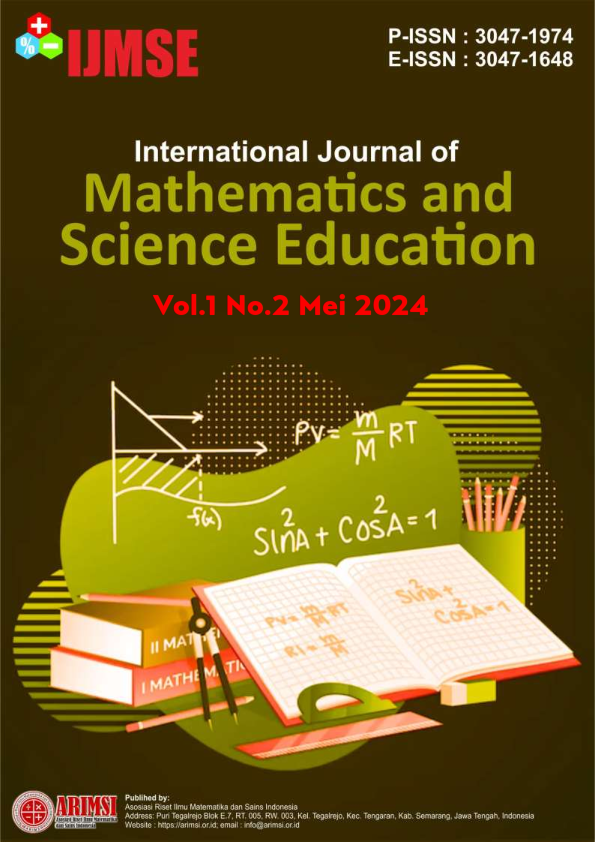The Role Of Digital Tools in Teaching Science: A Comparative Study Of Traditional and Technology-Enhanced Methods
DOI:
https://doi.org/10.62951/ijmse.v1i2.91Keywords:
Digital Tools, Science Education, Technology-Enhanced Learning, Traditional Teaching Methods, Student EngagementAbstract
This research investigates the role of digital tools in the teaching of science, comparing traditional instructional methods with those enhanced by technology. A series of classroom interventions were implemented in secondary schools, utilizing digital simulations and interactive platforms. The results indicate that technology-enhanced methods improved student engagement, understanding of complex scientific concepts, and academic performance. The paper highlights the potential of digital tools to transform science education and recommends strategies for their effective integration in the classroom.
References
Alfieri, L., Brooks, P. J., Aldrich, N. J., & Tenenbaum, H. R. (2019). Does digital learning improve science education? A meta-analysis of interactive tools in the classroom. Educational Technology Research and Development, 67(4), 733-760. https://doi.org/10.1007/s11423-019-09616-x
Archer, K., & Owen, R. (2020). Transforming science classrooms with technology: A study on the impact of digital simulations. Journal of Science Education and Technology, 29(3), 412-428. https://doi.org/10.1007/s10956-020-09801-x
Bell, R. L., Maeng, J. L., & Peters, E. E. (2019). Teaching science as inquiry with technology: A guide for K-12 educators. Science Scope, 44(2), 22-29.
Blanchard, M. R., Harris, L. A., & Jones, L. (2018). Traditional vs. technology-enhanced science classrooms: A case study on student engagement and learning. Journal of Educational Research, 111(3), 305-316. https://doi.org/10.1080/00220671.2017.1307910
Chiu, J. L., & Linn, M. C. (2018). Supporting learning with digital tools in science: What do students gain? International Journal of Science Education, 40(5), 606-623. https://doi.org/10.1080/09500693.2018.1442045
Clark, D. B., Nelson, B. C., & Slotta, J. D. (2019). Using technology to support scientific inquiry in secondary education. Journal of Science Education and Technology, 28(3), 147-161. https://doi.org/10.1007/s10956-019-9772-2
Cuban, L. (2020). Oversold and underused: Computers in the science classroom. Harvard University Press.
Ertmer, P. A., & Ottenbreit-Leftwich, A. T. (2019). Teacher technology change: How knowledge, confidence, beliefs, and culture intersect. Journal of Research on Technology in Education, 42(3), 255-284. https://doi.org/10.1080/15391523.2019.1633694
Fischer, C., & Heindl, J. (2019). Virtual labs vs. traditional labs: An evaluation of learning outcomes in chemistry. Journal of Science Education and Technology, 28(5), 120-133. https://doi.org/10.1007/s10956-019-9773-1
Kim, P., & Hwang, Y. (2020). The impact of augmented reality on students' engagement and motivation in science classes. Journal of Educational Computing Research, 58(4), 724-743. https://doi.org/10.1177/0735633119877417
Lai, K.-W., & Bower, M. (2018). How digital technologies can support science learning. Computers & Education, 114, 209-223. https://doi.org/10.1016/j.compedu.2017.07.005
Mayer, R. E. (2019). Multimedia learning and digital tools in science: A cognitive approach. Educational Psychologist, 54(3), 141-151. https://doi.org/10.1080/00461520.2019.1616746
McFarlane, A. (2020). The role of digital technologies in science education: Bridging the gap between traditional and modern classrooms. British Journal of Educational Technology, 51(6), 2121-2132. https://doi.org/10.1111/bjet.12807
Sandholtz, J. H., Ringstaff, C., & Dwyer, D. C. (2018). Teaching with technology: Creating student-centered science learning environments. Teachers College Record, 120(6), 1-22.
Zydney, J. M., & Warner, Z. (2020). Benefits of digital simulations for learning in science education: A comparison with traditional instruction. International Journal of Science Education, 42(9), 1463-1480. https://doi.org/10.1080/09500693.2020.1796262
Downloads
Published
How to Cite
Issue
Section
License
Copyright (c) 2024 International Journal of Mathematics and Science Education

This work is licensed under a Creative Commons Attribution-ShareAlike 4.0 International License.





